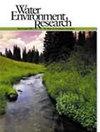摘要
由富营养化引起的有害藻华(HABs)是一种日益严重的生态威胁,它通过释放有毒的微囊藻毒素(MCs)损害水质和生态系统健康。这些毒素对水生生物和人类健康都构成了重大风险。在新出现的解决方案中,紫外线-C 技术因其在抑制藻类生长和降解 MCs 方面的高效性而备受关注,它提供了一种成本效益高且环保的方法,并将二次污染降至最低。然而,现有的研究往往忽略了一些关键方面,包括藻类对紫外线-C 波长的敏感性差异、不同水生条件下处理的稳定性以及降解副产品的毒性。本综述强调了基于紫外线-C 的除藻机制,探讨了其潜在的局限性(如藻类抗性),并将其功效与其他修复方法进行了比较。值得注意的是,缺乏对特定波长敏感性和实际应用效果的全面研究是一个重大的知识空白。要优化紫外线-C 技术,以减轻有害藻类繁殖并改善富营养化环境中的水质安全,就必须对这些领域开展进一步的研究。实践点:紫外线波段的选择应根据藻类种类进行调整。紫外线-C 系统在自然水体中的研究和应用有限,具有不稳定性。将紫外线-C 与其他技术相结合,可大大提高藻类控制效率。未来的研究应强调防止该系统中的微囊藻毒素(MCs)因细胞裂解和细胞外释放而在短时间内快速释放的策略。Harmful algal blooms (HABs), driven by eutrophication, are a growing ecological threat, compromising water quality and ecosystem health through the release of toxic microcystins (MCs). These toxins pose significant risks to both aquatic life and human health. Among the emerging solutions, UV-C technology has gained attention for its efficiency in inhibiting algal growth and degrading MCs, offering a cost-effective and environmentally friendly approach with minimal secondary pollution. However, existing studies often overlook key aspects, including the variability in algae sensitivity to UV-C wavelengths, the stability of treatment across diverse aquatic conditions, and the toxicity of degradation byproducts. This review highlights the mechanisms underlying UV-C-based algae removal, explores its potential limitation, such as algal resistance, and compares its efficacy with other remediation methods. Notably, the lack of comprehensive research on wavelength-specific sensitivity and real-world application efficacy represents a significant knowledge gap. Further investigation into these areas is essential to optimize UV-C technology for mitigating HABs and improving water safety in eutrophic environments. PRACTITIONER POINTS: The choice of UV band should be adjusted to the algae species. The UV-C system, with limited studies and applications in natural water bodies, demonstrates instability. Combining UV-C with other technologies substantially enhances the efficiency of algal control. Future research should emphasize strategies to prevent the rapid release of microcystins (MCs) from this system due to cell lysis and extracellular release within a short time frame.

 求助内容:
求助内容: 应助结果提醒方式:
应助结果提醒方式:


